Published Oct 20, 2023
10 Star Trek Stories Inspired by Horror Movie Classics
From classics to cult favorites, here are some of our favorite references.

StarTrek.com
Few franchises have contributed to the popular imagination like Star Trek. Even people who have never watched a single episode or movie understand references to Klingons, the Borg, or the Enterprise.
But Star Trek also received its share of influence from other properties, including horror movies. Here’s a list of ten episodes and movies that draw from scary stories, perfect for your Star Trek viewing this October.
"Catspaw" — The House on Haunted Hill (1959)
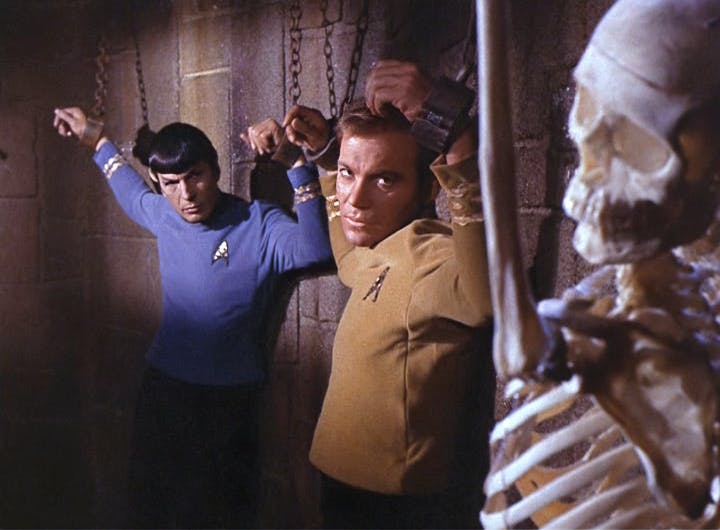
"Catspaw"
StarTrek.com
With a script from Psycho author Robert Bloch, it’s no surprise that the seventh episode of ’ second season has a horror feel. When Kirk, Spock, and Bones enter a creepy castle during their search for missing Sulu and Scotty, they encounter a host of spooky figures, including witches and a black cat.
This imagery can be found in many old horror films, but none better capture the mélange of tropes like the William Castle spectacle indirectly responsible for his success. Hollywood legend holds that the financial success of 1959’s The House on Haunted Hill inspired Alfred Hitchcock to adapt Bloch’s novel. Starring Vincent Price as a billionaire who challenges treasure-seekers to spend 24 hours in his haunted mansion, The House on Haunted Hill is packed with the same type of campy apparitions that plague Kirk and his crew in “Catspaw.”
Star Trek: First Contact — Night of the Living Dead (1968)
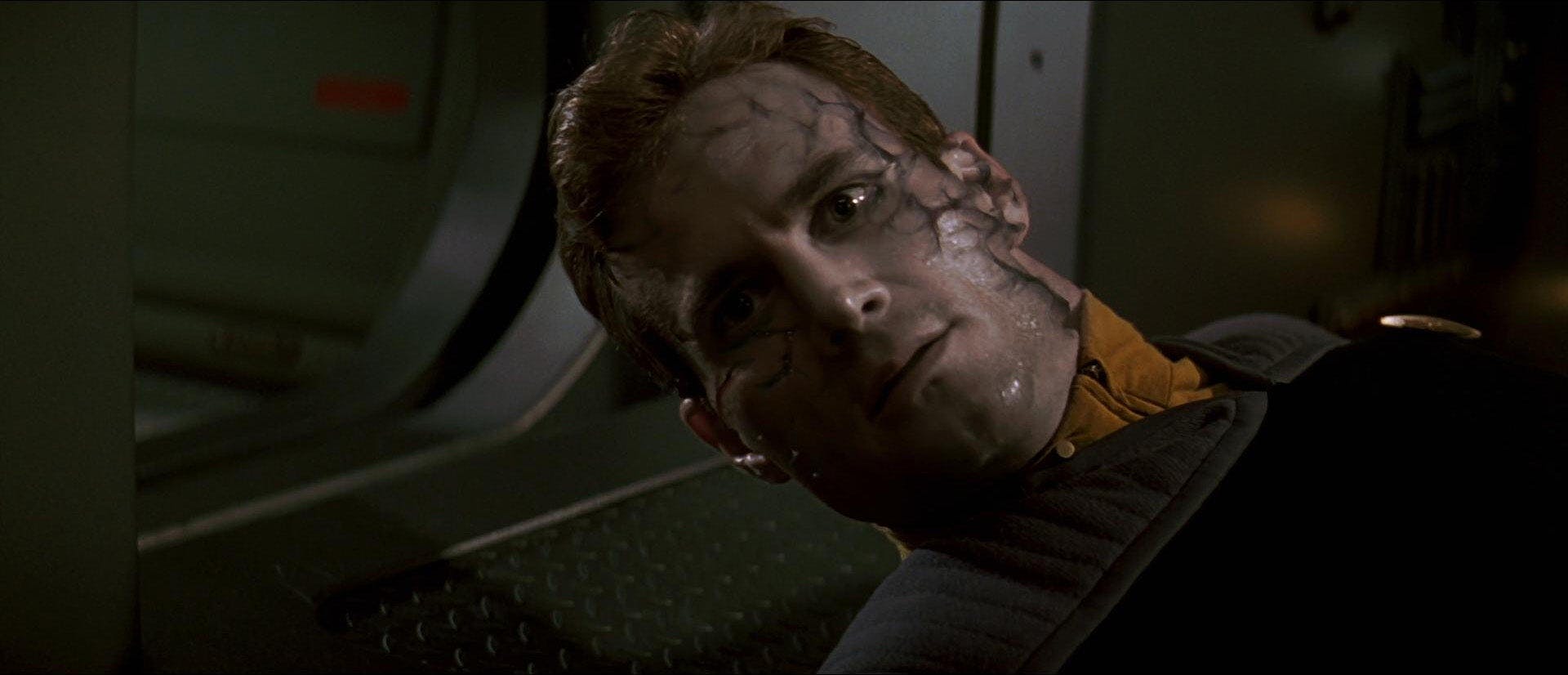
Star Trek: First Contact
StarTrek.com
From their first appearance in the second-season episode “,” the Borg established themselves as one of the most disturbing enemy races. But it wasn’t until the two-parter “” and the film that viewers saw everything the Borg can do. The Borg strip away their victims’ identities, reducing them to mindless drones, grotesque reminders of the people they used to be.
Loss of identity has been a key part of zombie movies, ever since George Romero redefined the genre with 1968’s Night of the Living Dead. In one of the film’s most disturbing scenes, a young girl turns and kills her parents, who refuse to accept that their daughter has been replaced by a mindless monster. Similar scenes have appeared in the movies and tv shows that built on Romero’s premise. But none have captured the zombie ethos better than the Borg’s ominous warning, “Resistance is futile.”
"Sub Rosa" — The Innocents (1961)

"Sub Rosa"
StarTrek.com
“” regularly shows up on lists of worst TNG episodes, and even received some gentle ribbing in an episode of Lower Decks. The story of Dr. Crusher falling for a ghost on a planet modeled after 17th Century Scotland sits awkwardly among science fiction tales about ongoing explorations into deep space. But “Sub Rosa” does belong to another, equally rich literary vein.
“Sub Rosa” borrows heavily from the 1961 Jack Clayton film The Innocents, itself an adaptation of the Henry James novella The Turn of the Screw. In The Innocents, new governess Miss Giddens (Deborah Kerr) sees visions of previous caretakers Quint (Peter Wyngarde) and Jessel (Clytie Jessop), ghosts who may or may not threaten the children in her care. “Sub Rosa” eschews the children, but intensifies the gothic romance only implied in earlier adaptations, making it a unique entry among The Turn of the Screw adaptations.
Star Trek Nemesis — Nosferatu (1922)
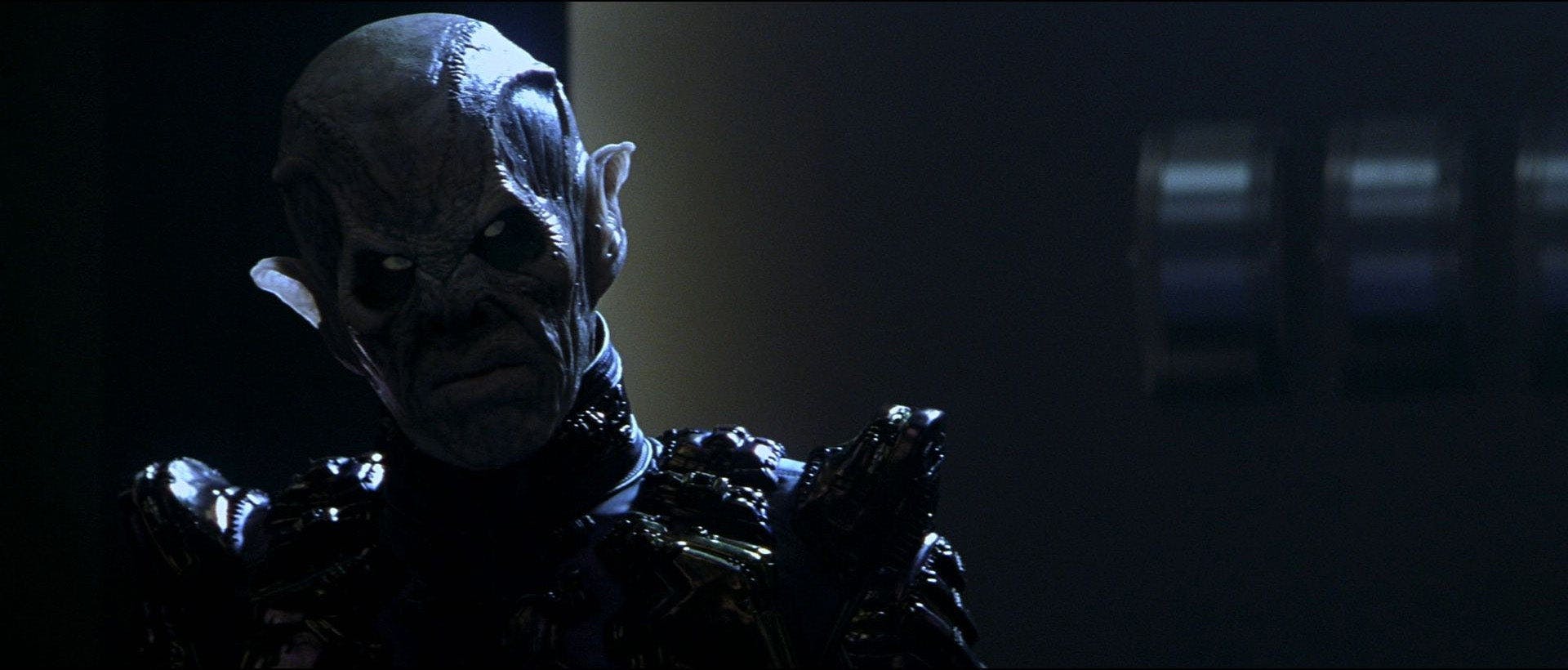
Star Trek Nemesis
StarTrek.com
The final big screen adventure of the TNG crew introduces the Remans, a Romulan race oppressed by the Empire and lead by Shinzon, a clone of Picard played by Tom Hardy.
With their bat-like features and telepathic abilities, the Remans quite resemble one of the world’s most iconic monsters, Count Orlok of the silent German expressionist film Nosferatu: A Symphony of Horror. An unauthorized adaptation of Dracula, Nosferatu keeps the same basic plot line as Bram Stoker’s novel. But where Count Dracula was a sophisticated aristocrat, actor Max Schreck plays Orlok like a true creature of the night. His twisted visage and claw like hands made for a striking image, one that still influences horror movies today. The Remans retain the beastly features of their cinematic forerunner, even as Rob Perlman brings an air of dignity to his performance as Shinzon’s viceroy.
"Empok Nor" – John Carpenter’s The Thing (1982)

"Empok Nor"
StarTrek.com
For a show that dealt with the supernatural more directly than any other Star Trek series, rarely featured horror episodes. Season 5’s “” offers a rare exception, in which Garak accompanies Chief O’Brien and his engineers to the titular abandoned station. When Garak contracts a virus designed to make Cardassians kill outsiders, he goes on a murderous spree against his one-time allies, playing their trust against them.
With its claustrophobic atmosphere and its portrayal of paranoia, “Empok Nor” mirrors the 1982 John Carpenter classic The Thing. Starring Kurt Russell and Keith David, The Thing drips with tension, as a shape-shifting alien infiltrates a remote Antarctic outpost. The humans turn against one another as they hunt down a creature that can look like anyone, providing the perfect groundwork for an episode that explores O’Brien’s past and Garak’s mercurial allegiances.
"The Thaw" — It (1990)
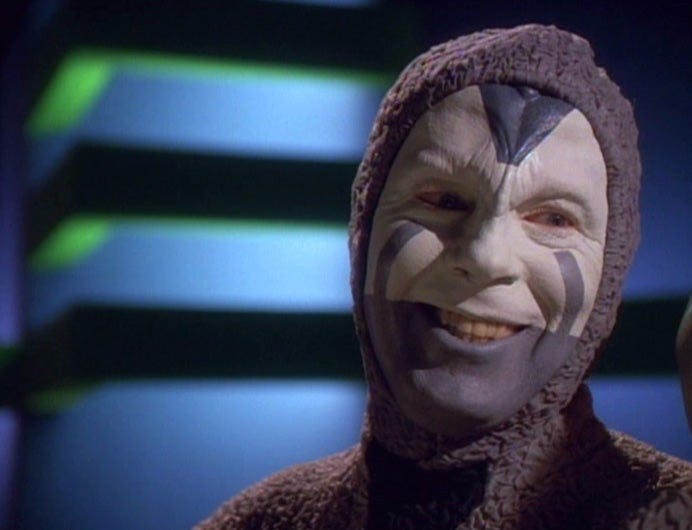
"The Thaw"
StarTrek.com
No Trek series dabbled with horror as much as , starting with Season 2’s “.” After discovering five stasis chambers connected to a life support system, Harry Kim and B’Elanna Torres go into deep sleep to search for survivors. But instead of colonists, they encounter a twisted circus troupe lead by a devious clown, played by Michael McKean.
When the episode aired in 1996, “scary clown” meant only one thing — Pennywise, the demonic creature featured in a 1990 TV movie based on Stephen King’s It. As portrayed by Tim Curry, Pennywise seethed with menace, even at his most playful. McKean gives a goofier performance for his clown, but he follows Curry’s lead whenever it’s time to threaten the Voyager crew.
"Cold Fire" — Suspiria (1977)
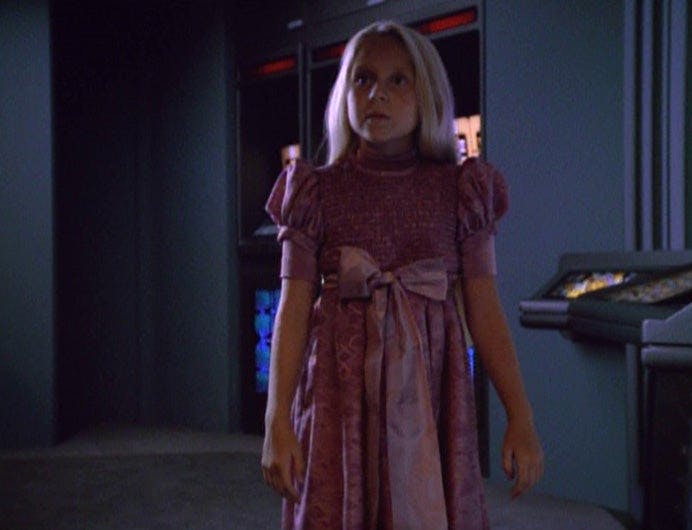
"Cold Fire"
StarTrek.com
To the casual viewer, Season 2’s “” might be a strange entry on this list. After all, there’s little overt horror in the story of Kes meeting a colony of Ocampans who have rejected the limits placed on her people and heightening her telepathic abilities. But these Ocampans serve a Nacene whose name immediately catches the attention of any scary movie fan — Suspiria.
Directed by Italian filmmaker Dario Argento, the psychedelic Suspiria follows an American dancer who finds out too late that a coven of witches run the school she’s attending. The episode uses none of the film’s iconic imagery, such as a hairy-handed beast with yellow eyes or a room filled with razor wire, but there’s a clear echo of Argento’s witches when Suspiria arrives on Voyager in the form of a creepy little girl.
"Darkling" — Dr. Jekyll and Mr. Hyde (1920)
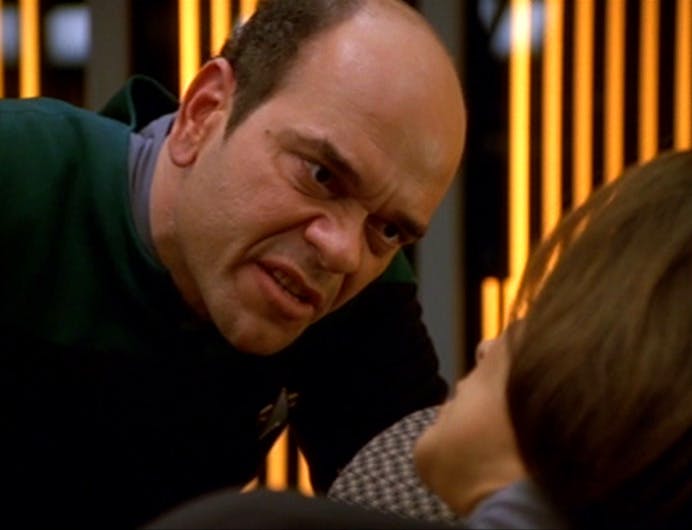
"Darkling"
StarTrek.com
Robert Louis Stevenson’s tale of a kindly doctor whose experiments to remove his darker nature results in a brutish alter-ego called Mister Hyde has been adapted countless times. The best film version debuted in 1920 and featured John Barrymore as a magnetic and utterly unhinged Mr. Hyde.
But the most unconventional adaptation might be the Voyager episode “.” Like Dr. Jekyll, Voyager’s Doctor only endeavors to improve himself, by loading into his personality matrix historical figures such as the poet Lord Byron and Mahatma Gandhi. But as he tries to isolate the best qualities of those figures, their worst impulses affect his programing as well, manifesting in a cloaked alter-ego who threatens the Voyager crew. It’s an exciting adventure in which The Doctor learns that embracing one’s humanity also involves acknowledging one’s dark side.
"Impulse" — The Crazies (1973)
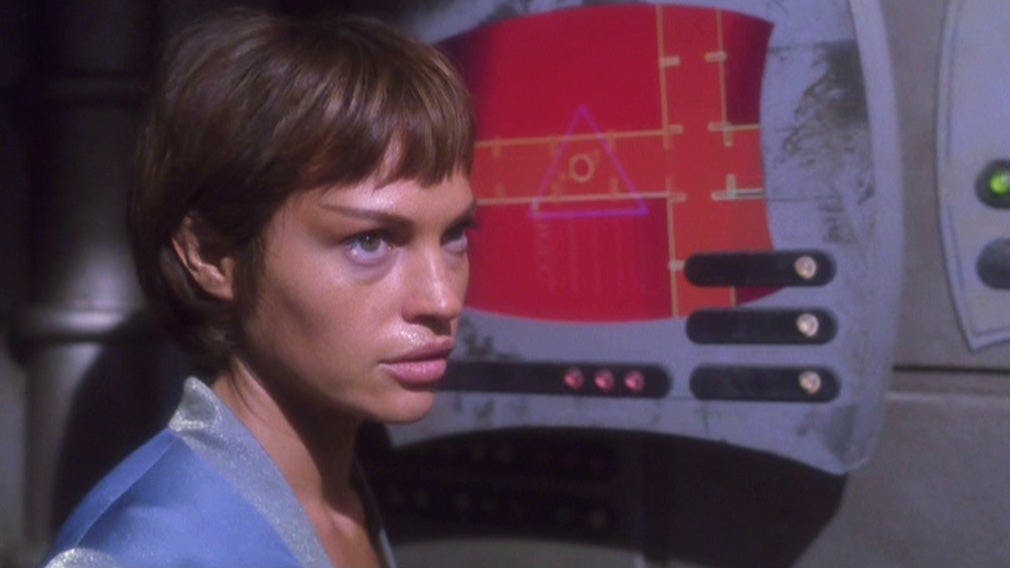
"Impulse"
StarTrek.com
Although he’s best known for his movies about flesh-eating ghouls, George Romero gave us a different kind of monster with 1973’s The Crazies. Set in a small Pennsylvania town, The Crazies chronicles the destruction wrought by a biological weapon that turns regular people into violent sociopaths. As in Romero’s zombie movies, the scares in The Crazies come from watching people lose their identities and become something inhuman and animal-like.
That premise becomes even more rich when applied to the usually emotionless Vulcans in the third-season episode “.” When the NX-01 answers a distress call, Archer and his crew discover not the serene scientists they expect but angry killer Vulcans. Things grow worse when T’Pol begins emotional outbursts, forcing Phlox to find a cure before it’s too late. It may not hit as close to home as Romero’s movie, but “Impulse” unsettles viewers by forcing us watch characters we love give themselves over to hatred.
"Context is for Kings" — Aliens (1986)
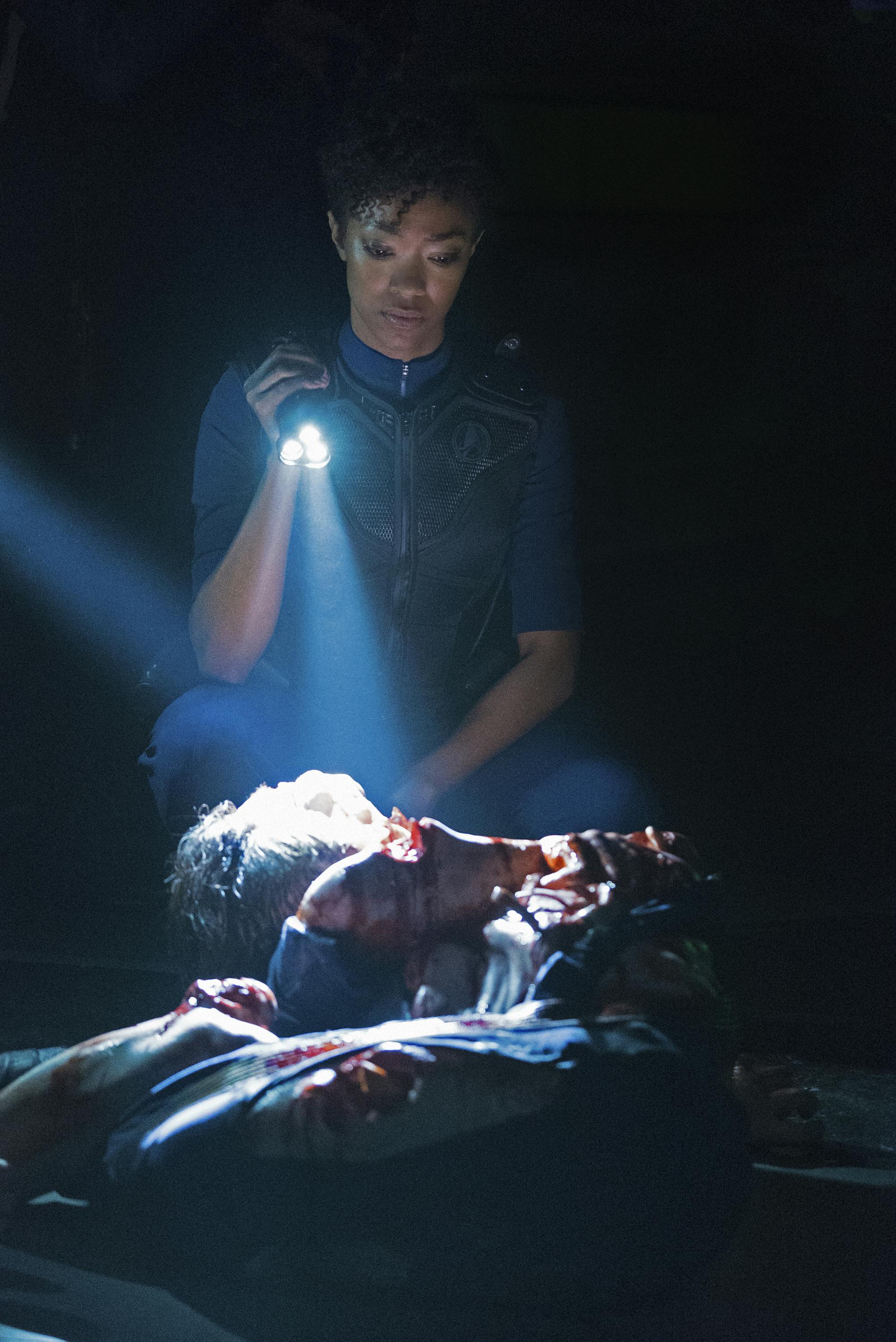
"Context is for Kings"
StarTrek.com
In the third episode of ’s first season, Michael Burnham arrives on the Discovery and meets the hawkish Captain Lorca, who assigns her to investigate the destroyed U.S.S. Glenn. As they search the ship’s wreckage, Burnham and her new crewmates learn what destroyed the Glenn — a powerful beast, seemingly impervious to their weapons.
Throughout “Context is for Kings,” keen horror fans may notice similarities with Aliens, the 1986 sci-fi horror sequel directed by James Cameron. Where the first Alien film pitted Sigourney Weaver’s Ellen Ripley and her fellow blue-collar workers against a single xenomorph, Aliens teams Ripley with a space marine platoon fighting an entire nest of aliens. Where the marines fall apart when their guns and their bravado fail them, Ripley overcomes her fear to rescue the sole surviving colonist. By referencing Aliens, “Context” establishes Burnham as a hero modeled after Ripley, intelligent and compassionate as she is brave.





